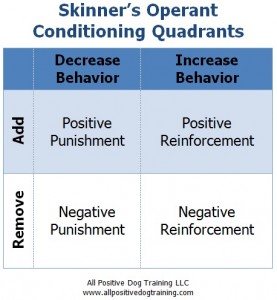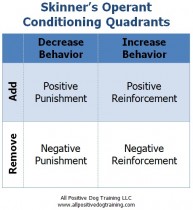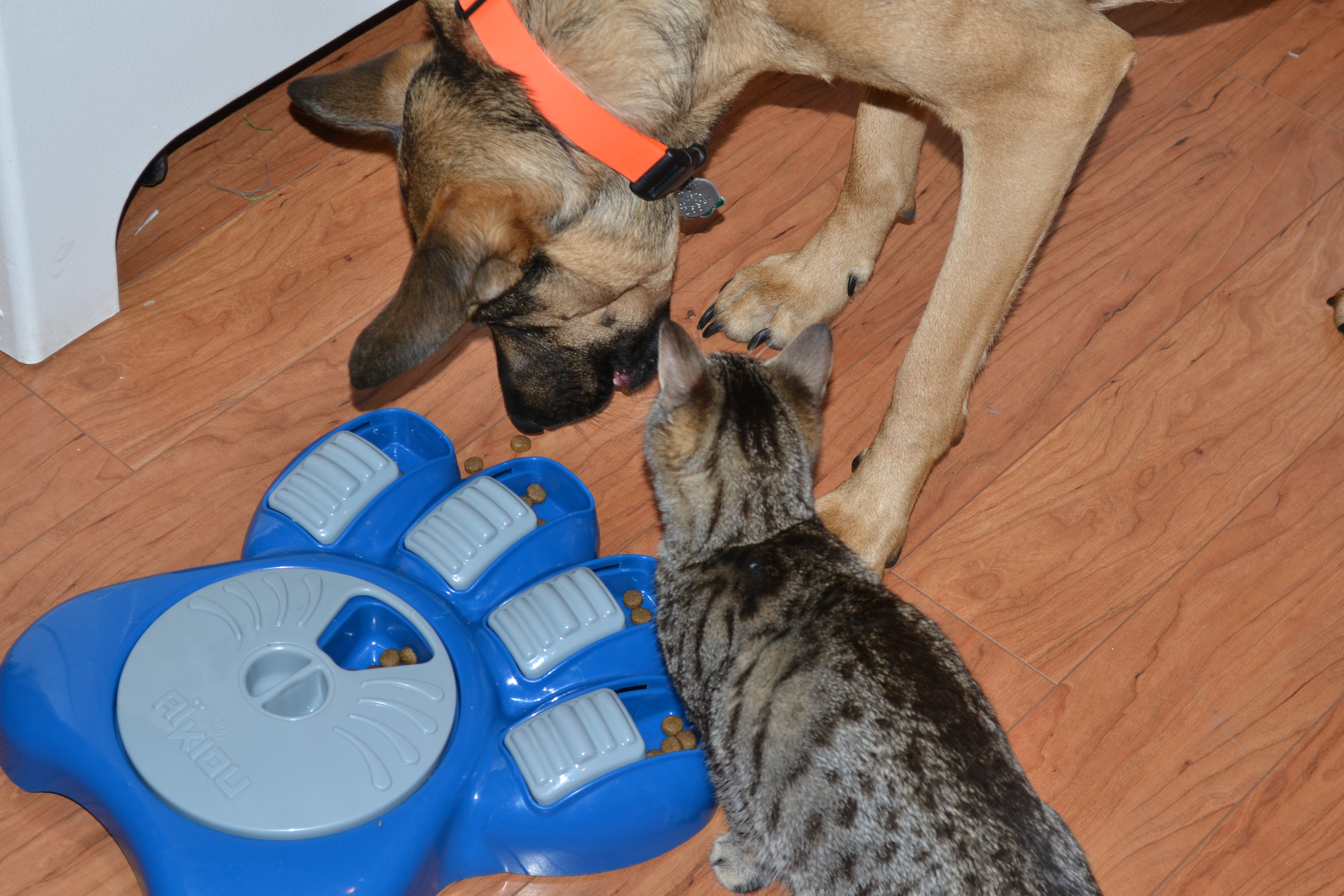Now that you have learned about Positive Punishment (Skinner’s Quadrants Series – Part I), lets looks at Negative Reinforcement. This term is a bit confusing if you haven’t heard it or seen it before (and even if you have!).
Negative Reinforcement refers to two things:
- the removal of something
- something that will increase the frequency of a behavior in the future.
This basically means taking away something bad when the behavior happens so that a behavior happens more often. There has to be something bad occurring before the certain behavior happens. When the behavior happens, that bad thing goes away.
 An example of this is an alarm clock in the morning – it rings until the desired behavior (waking up) happens. Removing the annoying sound is negative reinforcement.
An example of this is an alarm clock in the morning – it rings until the desired behavior (waking up) happens. Removing the annoying sound is negative reinforcement.
In dog training, a common example is teaching “come” with a shock collar. It is taught by using frequent stimulation (shocks) until the dog comes. Once the dog comes to the handler, the shocks stop – this reinforces coming to the handler as the unpleasant and annoying stimulation goes away. (The dog comes to the handler to avoid an annoying sensation and not because it is his own free will to come to the handler.)
Obviously, this is not one of my favorites. It is not pleasant for the dog. Personally, I would rather a dog do something to please me, not to avoid something irritating.




